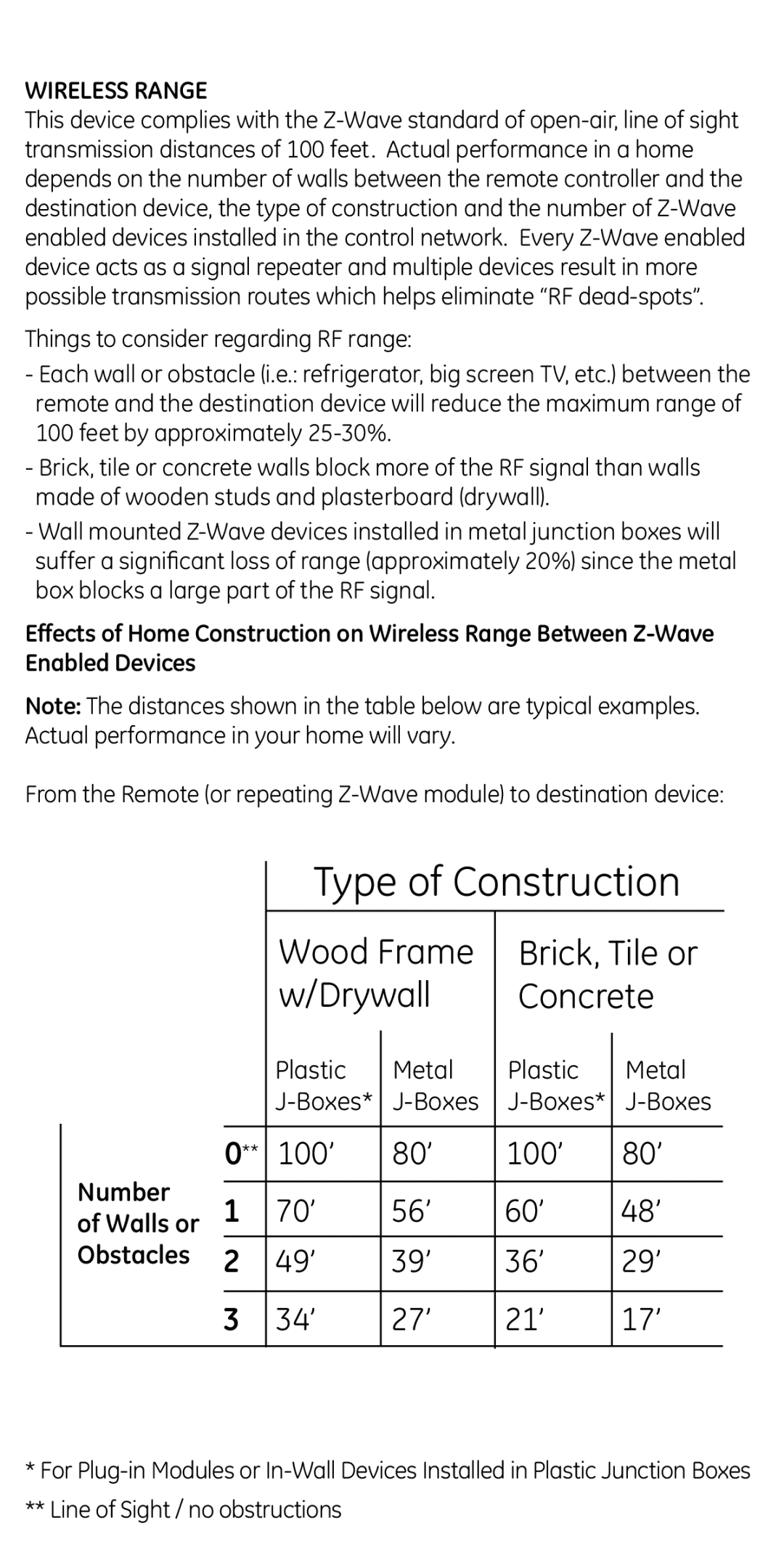WIRELESS RANGE
This device complies with the Z-Wave standard of open-air, line of sight transmission distances of 100 feet. Actual performance in a home depends on the number of walls between the remote controller and the destination device, the type of construction and the number of Z-Wave enabled devices installed in the control network. Every Z-Wave enabled device acts as a signal repeater and multiple devices result in more possible transmission routes which helps eliminate “RF dead-spots”.
Things to consider regarding RF range:
-Each wall or obstacle (i.e.: refrigerator, big screen TV, etc.) between the remote and the destination device will reduce the maximum range of 100 feet by approximately 25-30%.
-Brick, tile or concrete walls block more of the RF signal than walls made of wooden studs and plasterboard (drywall).
-Wall mounted Z-Wave devices installed in metal junction boxes will suffer a significant loss of range (approximately 20%) since the metal box blocks a large part of the RF signal.
Effects of Home Construction on Wireless Range Between Z-Wave Enabled Devices
Note: The distances shown in the table below are typical examples. Actual performance in your home will vary.
From the Remote (or repeating Z-Wave module) to destination device:
| | Type of Construction |
| | Wood Frame | Brick, Tile or |
| | w/Drywall | Concrete |
| | Plastic | | Metal | Plastic | | Metal |
| | | |
| | J-Boxes* | | J-Boxes | J-Boxes* | | J-Boxes |
| | | | | | | |
| 0** | 100’ | | 80’ | 100’ | | 80’ |
Number | | | | | | | |
1 | 70’ | | 56’ | 60’ | | 48’ |
of Walls or | | |
Obstacles | 2 | 49’ | | 39’ | 36’ | | 29’ |
| | | | | | | |
| 3 | 34’ | | 27’ | 21’ | | 17’ |
| | | | | | | |
*For Plug-in Modules or In-Wall Devices Installed in Plastic Junction Boxes
**Line of Sight / no obstructions
